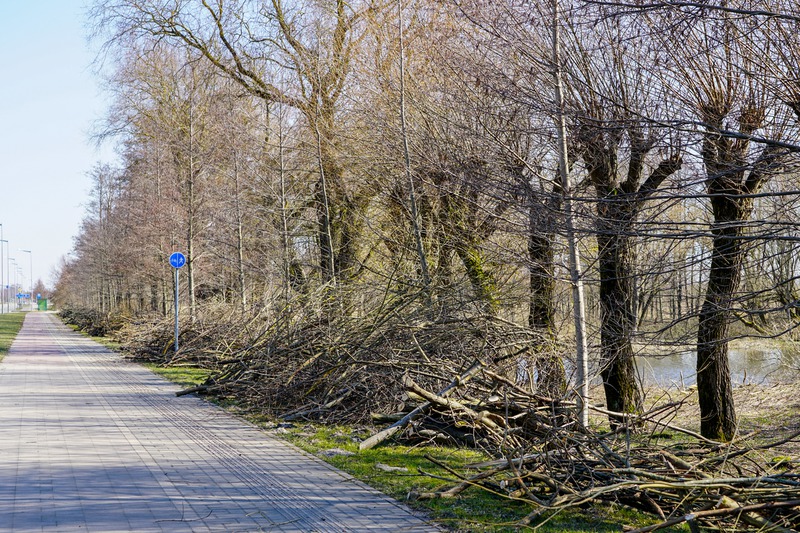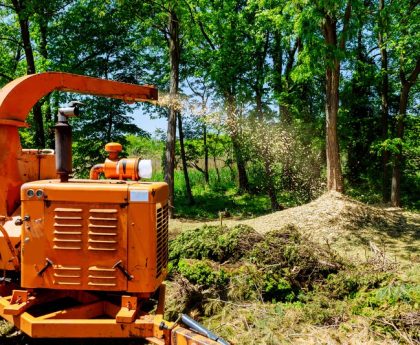If you’ve got a slice of woodland to your name, you’re sitting on a green treasure that deserves the best care. Balancing nature and numbers is what effective forest management is all about. Let’s talk about the timely topic of thinning those trees to keep your forest and your future looking bright.
What Is Tree Thinning?
Tree thinning is a forest management technique where certain trees are carefully chosen to be removed. This lets the remaining trees have more room to grow, access to more nutrients, and a better shot at staying healthy. It’s like giving your forest a roomy, comfy place to live it up. If you’re managing timberland, you’ve probably heard about tree thinning Oregon – targeted, deliberate and with the big picture in mind.
Signs It’s Time to Thin Your Timber
You might be wondering when to roll up those sleeves and get thinning. Here are some surefire signs to look out for
1. Overcrowded Woods
When trees jostle for space, and their branches rub against each other, this indicates overcrowding. This competition for light, water, and nutrients can hinder optimal growth. Thinning out overcrowded areas allows remaining trees to thrive by providing them with adequate space and resources.
Good management keeps the ecosystem lively and the finances flowing. Especially if you’re in the Pacific Northwest, dealing with timberland management Oregon forests need a special touch that balances growth with conservation
2. Stunted Tree Growth
Tight growth rings in tree trunks suggest slow or inhibited growth due to overcrowding. A tree’s growth rings reflect its annual growth rate, and narrower rings indicate periods of stress or limited resources. Thinning can alleviate competition among trees, enabling them to grow more vigorously and develop broader, healthier growth rings.
3. Unhealthy Forest Floor
A diverse and flourishing forest floor is a sign of a healthy ecosystem. However, if the forest floor appears sparse or lacks vegetation, it may indicate insufficient light penetration due to dense tree canopies. Through sustainable forest management Oregon and by thinning the timber canopy allows more sunlight to reach the forest floor, fostering the growth of understory vegetation and promoting biodiversity.
4. Increased Pest Problems
Overcrowded forests create favorable conditions for pests and diseases to thrive. Stressed and weakened trees are more susceptible to infestations, leading to increased pest populations. If you notice a surge in pest activity, such as an abundance of insects or signs of disease, it could be a sign that your timber stands need thinning to reduce stress and improve overall forest health.
5. Decreased Wildlife Habitat
Healthy forests provide vital habitat for a diverse range of wildlife species. Overcrowded timber stands can limit the availability of food, shelter, and nesting sites for wildlife. If you observe a decline in wildlife activity or diversity in your woodland, it may be due to overcrowding and limited habitat quality. Thinning timber to create open spaces and diverse forest structures can enhance wildlife habitat and support biodiversity conservation efforts.
6. Increased Risk of Fire
Dense, overcrowded timber stands are more susceptible to wildfires, especially during dry seasons or periods of drought. The accumulation of dry vegetation and the proximity of trees create conditions conducive to the rapid spread of fire. Thinning timber reduces fuel loads, decreases fire intensity, and helps create firebreaks, reducing the risk of catastrophic wildfires and protecting both forest ecosystems and nearby properties.
7. Uneven Canopy Development
An uneven canopy, with some trees significantly taller or denser than others, indicates an imbalance in forest structure and competition for resources. This uneven growth can lead to shading of understory vegetation, hinder regeneration, and affect overall forest health. Thinning timber allows for more uniform canopy development, ensuring that all trees receive adequate light and resources for optimal growth and productivity.
The Hows of Tree Thinning Techniques
Alright, so you know it’s time to thin the herd of trees, but how do you go about it? Here’s where things get technical, but keep up; it’s not rocket science. Essentially, there are a few ways you can approach this:
-
Selective Thinning: You pick specific trees to take out, usually the less vigorous ones, giving the top performers room to strut their stuff.
-
Systematic Thinning: This one’s about removing trees at regular intervals – neat, orderly, and straightforward.
-
Low Thinning (or Thinning from Below): Target the smaller, underperforming trees. It’s like encouraging the underdogs to bow out gracefully.
-
High Thinning (or Thinning from Above): Here, you’re laying off the big guys to give the little ones a shot at the big leagues.
-
Geometric Thinning: It’s all about angles and spacing. Set up a thin grid according to that pattern. Think of it like forest chess—strategic and smart.
Choosing the right technique depends on what you want out of your forest. Are you looking for commercial gains, ecological balance, or a bit of both? Your goals set the stage for your thinning strategy.
Final Thoughts
Thinning is like a strategic game that, when played well, leads to a thriving, sustainable forest. Knowing when to thin is crucial—it’s about reading the land and responding with care. Whether you’re in it for the lumber or the love of the land, a well-managed forest is a gift that keeps on giving. Pay attention and plan with purpose, and your timberland will reward you with a bounty of benefits. From clean air to a healthier habitat, and let’s not forget a profitable yield—thinning is not just necessary; it’s a wise move for every forward-thinking landowner.





